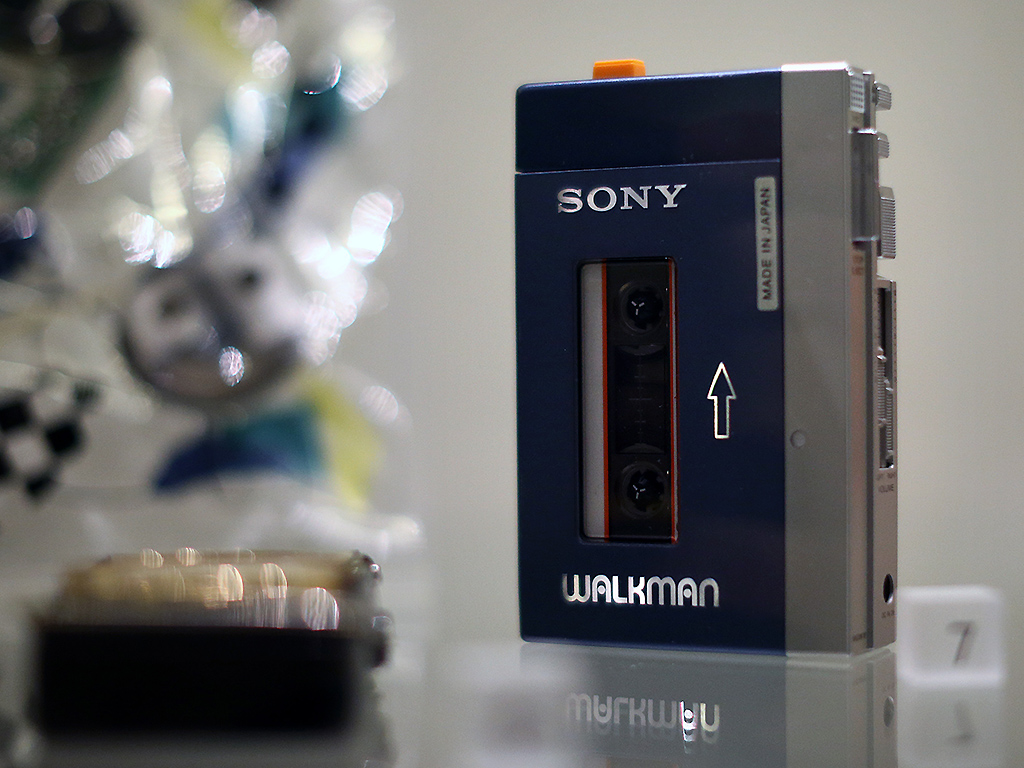Sony co-founder Masaru Ibuka enjoyed listening to music while travelling on business, especially during those long trans-Asia and transpacific flights. He started by using a modified version of the company’s TC-D5 cassette recorder, but ultimately found it to be too bulky.

That’s when he asked Norio Ohga, Sony’s executive deputy president, to come up with something a little more user-friendly. He then handed the project off to Kozo Ohsone, the general manager of Sony’s tape recorder business.
After prototyping with a mono-only unit released in 1977 called the Pressman, attention turned to an even greater challenge: good-sounding headphones that were also lightweight and could fit into a large pocket.
This was easier said than done. Forty years ago, headphones were heavy, clunky things that you used for private, solitary listening at home. Consumer hi-fi headphones made their debut in the 1950s but were heavy brutes. My first pair, an ugly beige set from Koss with a long, coiled cord, weighed close to five pounds. I was always conscious of that tonnage on my head. Could Sony come up with something anyone could wear that wouldn’t leave a divot in their skulls?
On June 22, 1979, the new device, the TPS-L2, was previewed for journalists at a Tokyo theme park. Riffing on the name “Pressman,” the new unit was a playback-only thing the “Walkman.”
Eight days later, on July 1, 1979, it went on sale to the general public.
WATCH BELOW: Watch how kids react to obsolete technology

(Side note: Ibuka-san hated the name “Walkman.” This explains why the device was sold as the “Stowaway,” “Soundabout,” and “Freestyle” in other territories. But because “Walkman” was the name used in Japan and by Sony engineers, the name eventually stuck.)
No one had ever seen anything like it before. It was expensive — about $200, or nearly $700 in today’s money — but it was insanely popular. Sony expected to sell 5,000 a month. They ended up moving 50,000 by the end of that summer and selling close to 400 million units by the time production of the cassette version of the Walkman ceased in 2009.
Yes, the TPS-L2 was conveniently small and portable. But its bigger selling point was the headphones: the revolutionary MDR-010s. Compact, comfortable and weighing almost nothing, they sounded better than anything of that size manufactured everywhere in the world.
It was the beginning of a new sort of headphone culture, a time when humans began walking around in public with them, sealed off from each other inside a private wall of sound. That experience of having music uploaded almost straight to your brain moved from the couch or the bedroom to everywhere.
- Life in the forest: How Stanley Park’s longest resident survived a changing landscape
- ‘Love at first sight’: Snow leopard at Toronto Zoo pregnant for 1st time
- Carbon rebate labelling in bank deposits fuelling confusion, minister says
- Buzz kill? Gen Z less interested in coffee than older Canadians, survey shows
Other manufacturers jumped into the personal music player game and within a few years, the sight of people walking around in public wearing headphones — many getting better with each passing generation — became common.
Today, the global marketplace for headphones and earbuds is worth somewhere north of US$36 billion (Hey, how many sets do you have at home?) and most of us can’t imagine leaving home without our ‘buds or ‘phones, lest we have to deal with other humans.
Fine. So what’s the problem with that?
Critics say this has created new levels of social alienation and separation. We don’t interact with each other the way we used to. How many times have you seen someone pay for something at Starbucks without bothering to take their headphones off to talk to the barista?
How many people have you seen almost get into an accident because they were too deeply immersed in their music?
And while there’s much to be said over controlling your listening environment, people tend to listen only to music that they find appealing and risk never being taken out of their musical comfort zone.
This ability to shut out any unwanted music has led to the concept of “ego-casting” in all forms of media consumption. There’s a tendency to take in the news and information we want, not the news and information we should. Is it any wonder the spread of fake news is such a growing problem?
Then again, this is a noisy, distracting world. Maybe headphones are the only way to preserve the only private space we still have: our heads.
Were Mararu Ibuka alive today, I wonder what he’d make of all us zombies walking around in public, lost in whatever’s coming out of our headphones. Probably a little sad. He ordered the first Walkmans to have two headphone jacks because he couldn’t conceive of people not wanting to share what they were listening to. That second headphone jack disappeared after the first model.
—
Alan Cross is a broadcaster with 102.1 the Edge and Q107, and a commentator for Global News.
Subscribe to Alan’s Ongoing History of New Music Podcast now on Apple Podcast or Google Play






Comments